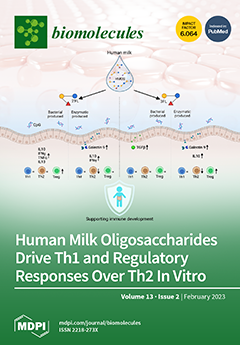Background: Chimeric antigen receptor T-cell therapy (CAR T-cell therapy) is associated with potentially life-threatening toxicities, most commonly cytokine release syndrome (CRS) and immune-effector-cell-associated neurotoxicity syndrome (ICANS). These frequent adverse events are managed with the IL-6 receptor antagonist tocilizumab and/or corticosteroids. The prophylactic and
[...] Read more.
Background: Chimeric antigen receptor T-cell therapy (CAR T-cell therapy) is associated with potentially life-threatening toxicities, most commonly cytokine release syndrome (CRS) and immune-effector-cell-associated neurotoxicity syndrome (ICANS). These frequent adverse events are managed with the IL-6 receptor antagonist tocilizumab and/or corticosteroids. The prophylactic and early use of corticosteroids for CRS and ICANS have previously been reported, but eventual negative impacts on CAR T-cell efficacy are feared. Methods: Retrospective comparative analysis of two patient cohorts with hematological malignancies treated with CAR T-cell therapy: 43 patients received early administration of 10 mg dexamethasone preceding each dose of tocilizumab (“early corticosteroid/ tocilizumab”, EcsTcz cohort) vs. 40 patients who received tocilizumab alone (“tocilizumab alone”, Tcz cohort) for treatment of low-grade CRS. Results: Despite overall higher CRS incidence (91% vs. 70%;
p = 0.0249), no high-grade CRS was observed (0% vs. 10%;
p = 0.0497) among patients receiving early corticosteroids in combination with tocilizumab. In terms of neurotoxicity, no worsening regarding incidence of ICANS (30% vs. 33%;
p = 0.8177) or high-grade ICANS (20% vs. 14%;
p = 0.5624) was observed in the EcsTcz cohort. Moreover, overall response rates (80% vs. 77%;
p = 0.7936), complete response rates (50% vs. 44%;
p = 0.6628), progression-free survival (
p = 0.6345) and overall survival (
p = 0.1215) were comparable for both cohorts. Conclusions: Our study suggests that the early use of corticosteroids in combination with the standard tocilizumab schedule for low-grade CRS following CAR T-cell therapy may significantly reduce the risk of high-grade CRS without negative impact on neurotoxicity or treatment outcome.
Full article






